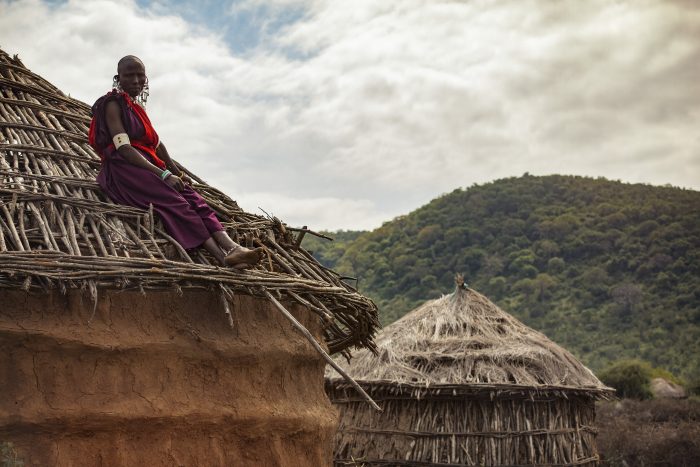
Global, small-group tour operator G Adventures, The George Washington University’s International Institute of Tourism Studies and the Planeterra Foundation announce the release of a new set of comprehensive, ground-breaking guidelines for companies working or traveling with Indigenous groups. The guidelines and depth map of lake superior, introduced to delegates gathered this week in Montego Bay, Jamaica at the Global Conference on Jobs and Inclusive Growth: Partnerships for Sustainable Tourism, are intended to provide clear guidance for travel companies that work or intend to work with Indigenous people, while helping communities more directly benefit from responsible and culturally sensitive tourism.
Speaking before event hosts from the World Bank Group, the United Nations World Tourism Organization (UNWTO), the Inter-American Development Bank, and the Government of Jamaica, plus representatives from 150 different countries, G Adventures’ Vice President of Social Enterprise and Sustainability, Jamie Sweeting, introduced the guidelines with a message of inclusion and change.
“For far too long, governments and businesses have prioritized rapid growth over respect for Indigenous peoples. Their ancestral lands, traditional culture and legacies have been threatened, and in many cases undermined, by the impatient pursuit of profit,” said Sweeting. “As more travelers seek immersive, experiential, off-the-beaten path vacations, I regret to say that the tourism sector has also contributed to this problem. We have an opportunity to rewrite that story; to lead from within, and make tourism a greater force for Indigenous well-being.”
Published in an online PDF that is available for free download now, Indigenous People and The Travel Industry: Global Good Practice Guidelines is a 23-page, open-source booklet that is meant to be a learning tool for anyone working in travel and tourism. Its 17 guidelines, which were developed after a thorough review of existing literature and primary surveys with communities and travelers, were finalized after input from an expert panel including the World Indigenous Tourism Alliance, Indigenous Tourism Association of Canada, U.S. Bureau of Indian Affairs, American Indian Alaska Native Tourism Association, Community Based Tourism Institute, and Sustainable Travel & Tourism Agenda.
The guidelines are organized into three categories to be of maximum relevance to the variety of organizations that interact with or affect Indigenous people through tourism: (1) developing tourism experiences, (2) operating tourism experiences, and (3) marketing tourism experiences. Their release is a key, first step toward G Adventures’ plans to fully audit its 700+ tours, 1000+ vendors, thousands of tour experiences, and its digital, print and video marketing materials, toward the development of a governing Indigenous Tourism Policy that will go into effect later in 2018.
“From the Maasai in East Africa, to the Quechua in Peru, our partnership with Indigenous communities is what makes our tours truly special for our customers and life-changing for local people,” explained G Adventures founder and owner Bruce Poon Tip. “I have always admired the way traditional communities continue to practice their culture, and consider myself fortunate to have learned from some wise, Indigenous teachers along the way. If we can give back, by bringing the travel and tourism industry along to collectively do more help than harm for these people, it will be a sea change in in our industry.”
Seleni Matus, Executive Director for The International Institute of Tourism Studies (IITS), said, “I’m confident that this tool, which is primarily intended for use by travel companies, will ultimately support the many Indigenous groups that depend on visitors for their economic well-being and for their cultural survival. The guidelines can facilitate a mutually beneficial relationship—one that’s in the best interest of businesses, communities and travelers.”
G Adventures today partners and/or contracts the services of 94 different Indigenous communities in 44 countries. Its social enterprise model – which seeks to earn profit while delivering social impact -- is built around a strategy of identifying the unique, but often excluded communities who have so often been left out of the tourism economy, then bringing them into the company’s supply chain. That way, communities like the San Bushmen in South Africa, the Wiwa people of Colombia’s Lost City, and the Red and Black Lahu and Karen people of Northern Thailand’s hill tribes, for example, directly benefit from sharing their lands, talents and stories with paying customers. Their accommodations, transportation, food and handicrafts become part of customers’ travel experiences.
Kelly Galaski, the Planeterra Foundation Project Manager overseeing the guidelines project, added her hopes for the guidelines’ impact: “As the world hyper-connects, the cultural survival of the world’s 370 million Indigenous people hangs in the balance. So, it’s our great hope that others in the travel and tourism sector join G Adventures in putting these guidelines to good and expedient use.”
